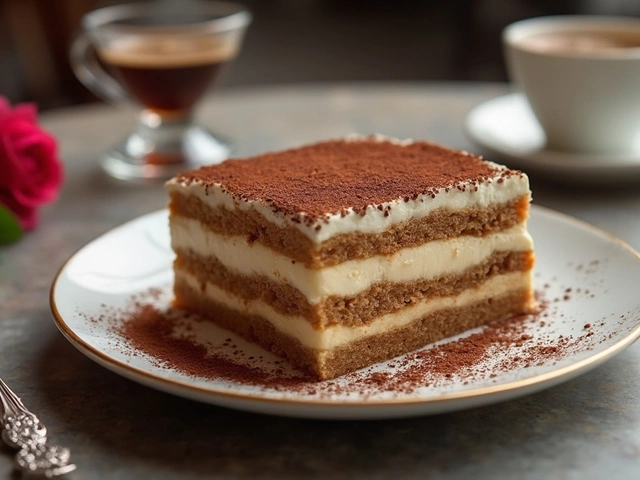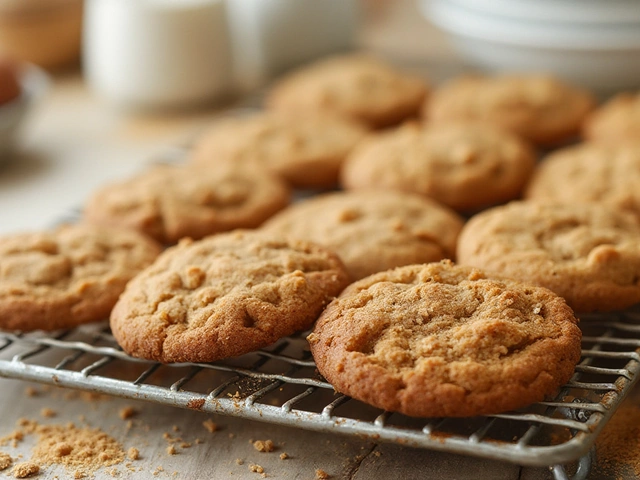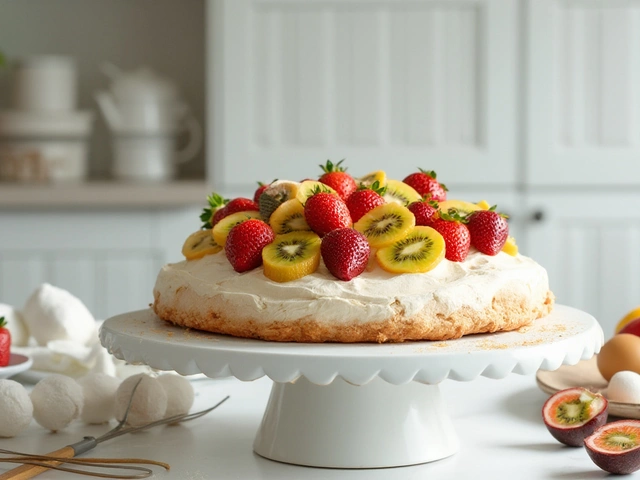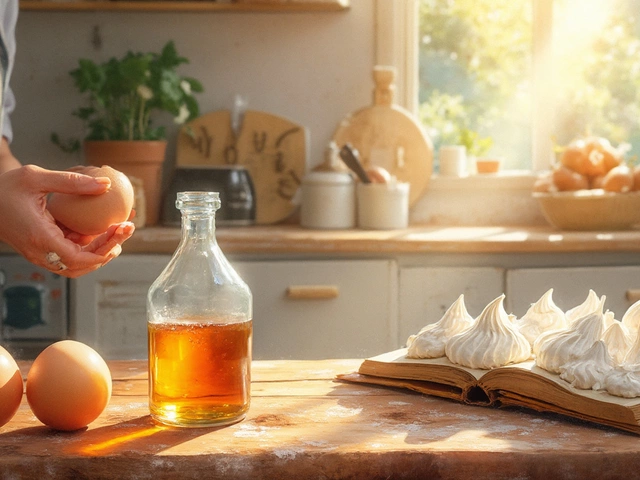
Cookies are pretty much universally loved, right? They’re warm, comforting, and perfect with a glass of milk or a cup of tea. But let's get real about cookies — they’ve got their limits. Fancy using cookies as a pizza crust or to patch up a wobbly table leg? Not gonna happen.
For starters, cookies aren’t a substitute for more sturdy baked goods like bread. They crumble too easily and lack the structure needed to hold fillings for sandwiches or to support a hefty stack of ingredients like buns do. Imagine trying to pile your burger onto a chocolate chip cookie — it doesn’t exactly scream stability.
Plus, despite our wildest dreams, cookies won't last long as building blocks for elaborate culinary structures. Gingerbread houses aside, most cookies simply aren't durable enough for ambitious edible construction projects. Next time you're tempted to make an Eiffel Tower replica in cookie form, you might want to reconsider.
- Misunderstood Cookie Uses
- When Cookies Miss the Mark
- Surprising Cookie Limitations
- Tips to Maximize Cookie Success
Misunderstood Cookie Uses
We all love a good homemade cookie, but sometimes we overestimate what these delightful treats can do. Sure, they’re versatile in the world of desserts, but that doesn’t make them a catch-all solution in the kitchen.
Poor Substitutes for Sandwich Bread
Many have tried, and many have failed: using cookies as a replacement for sandwich bread. The idea sounds novel, but let's face it, putting a sandwich filling between two cookies just isn’t practical. The crumbly nature of homemade cookies means they'll crack under pressure, leaving you with a mess. Their sweetness can also overpower traditional savory sandwich meats or fillings. Stick to using your cookies as they were meant to be—pair them with sweet spreads or alone as a tasty snack.
Ineffective Edible Placeholders
For those of us who get creative in the kitchen, using cookies as placeholders or bottoms for other treats can be tempting. However, swapping out more solid options like pie crusts or pastry shells with cookies doesn’t always work well. Most cookies lack the strength and texture to replace such items effectively. Instead, consider using cookies where they naturally shine—like crumbled as toppings on ice cream or in parfaits.
Soggy When Soaked
We know dipping cookies in milk is a classic, but soaking them with other liquids doesn’t always end well. For example, some might try soaking cookies in coffee to create a tiramisu-like base, only to find them dissolving into an unappetizing mush. Avoid disappointment by using cookies in contexts where they retain their delightful texture.
| Common Cookie Myth | Reality |
|---|---|
| Cookie Sandwich Buns | Too sweet and crumbly |
| Cookie as Pie Crust | Lacks structure and flavor balance |
| Cookie in Liquid Dishes | Becomes soggy and loses form |
When Cookies Miss the Mark
Cookies might be the superheroes of sweet treats, but even they have their kryptonite. Knowing what a homemade cookie can't do is just as important as knowing what it can.
First up, baking tips remind us that cookies aren't great at storage duties. While they ensure a delightful sugar fix, they aren't airtight like a proper sealable container. Imagine reaching for that cookie jar only to find stale goodies inside just because you thought the cookies' presence was enough to keep things fresh.
Cookies as Ingredients
Let's talk about cookies acting as ingredients. Sure, cookie crumbles have their place in desserts like cakes and ice cream, but trying to use a whole cookie as a base or main ingredient can fall flat. The consistency just doesn't hold up under pressure, literally.
- Cookie dough lacks the rising agents present in bread, such as yeast or baking soda for volume.
- Its high sugar content might cause burning or undesirable caramelization when not monitored closely.
Structural Integrity in Baking
For those ambitious bakers looking to craft architectural wonders out of DIY cookies, know this: the cookie's catching nature doesn't equate to building prowess. Stacking cookies might work for a tower of treats at a party, but constructing anything taller or more complex without risk of collapse? Better keep it simple unless you favor gingerbread.
Sticky Situations
Surprisingly, cookies don’t shine in sticky roles either. Instead of holding things together, their crumbly nature makes them better for pulling apart and devouring. If edibility isn't enough for sticking stuff together, cookies are best kept at the snacking table, not as a makeshift glue.
Stepping beyond their sweet enough nature, consider what a cookie shouldn't be tasked with before diving into your next baking project. It saves effort—and heartache—when cookies know their place.”
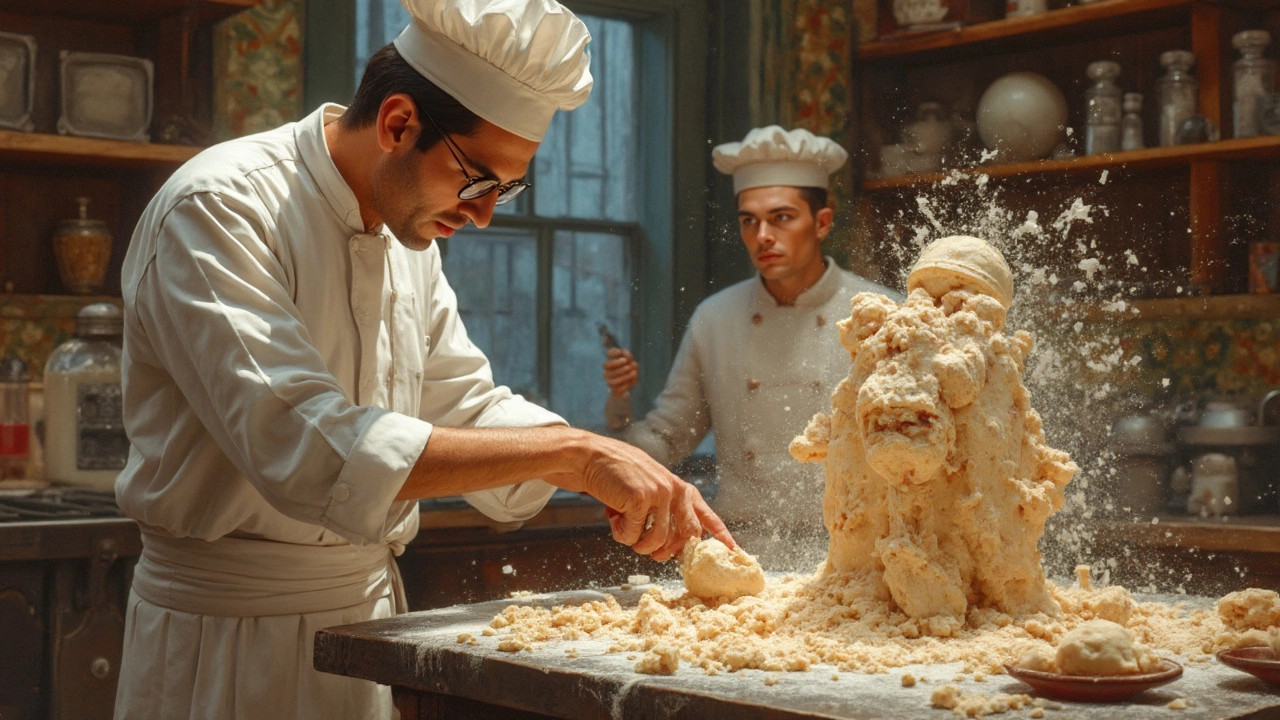
Surprising Cookie Limitations
Alright, as much as we adore homemade cookies, it's time to face some harsh truths about their capabilities. Misusing cookies might lead to some amusing kitchen fails, so let's pin down exactly where they fall short.
Cookies Can't Handle Heavy Lifting
Got some friends popping over, and you're scrambling to make some canapés? Don’t reach for those lovely shortbreads just yet. Cookies are not designed to support heavy toppings. They crumble under pressure, both literally and figuratively! Stick to sturdy options like crackers or small slices of bread for those fancy appetizer moments.
Structural Integrity Issues
When it comes to building, DIY cookies are a no-go zone for serious construction. Sure, gingerbread houses are seasonal fun, but they often collapse faster than you can say ‘icing disaster’. For anything more ambitious, like cookie bridges or towers, they lack the toughness required. Plus, cookies are sensitive to moisture, which means any exposure to humidity spells doom.
Interestingly, in 2023, a home baker in Leeds attempted a cookie-based arch only to see it end up in crumbs due to unexpected rain. Lesson learned? Keep epic edible projects indoors and maybe not rely on cookies!
Not a Dieter's Dream
Let’s get real about nutrition—most cookies are not the healthiest choice and can't substitute for nutrient-rich meals. Even the so-called ‘healthy’ cookies often pack in more sugar than you'd expect. If you're watching your diet, enjoy these baking tips: balance a cookie with some fresh fruit or a handful of nuts to keep things more balanced.
To put it into perspective, comparing an average chocolate chip cookie to a piece of fruit can be eye-opening:
| Item | Calories | Sugar (g) |
|---|---|---|
| Chocolate Chip Cookie | 100 | 7 |
| Medium Apple | 95 | 19 |
See the difference? While cookies are tasty, they're best as a treat rather than a staple on your meal plan.
Tips to Maximize Cookie Success
If you're diving into the world of homemade cookies, you probably want them to turn out just right every time. Here are some tried-and-tested tips to help you nail your baking game:
1. Read the Recipe Thoroughly
Sounds obvious, but it’s true: misunderstandings begin when we skim through recipes and miss crucial steps. A good read ensures you're prepared with all ingredients and tools before you even start.
2. Measure Accurately
A successful bake is all about precision. Flour and sugar need to be measured just right — too much can lead to dry and overly crunchy cookies. Use a digital scale if you have one; otherwise, scoop and level your ingredients.
"Baking is a science, and precision is key. Every gram counts." – Mary Berry
3. Temperature is Everything
If a recipe calls for room temperature butter or eggs, it really matters. Cold butter won’t cream properly, while cold eggs can cause your dough to seize up. Leave them out on the counter for a bit before using.
4. Chill the Dough
Chilling isn’t just to make rolling easier. It profoundly affects the texture and flavor of your cookies, avoiding them to spread too much in the oven. For many baking tips, patience is indeed a virtue.
5. Stay Watchful
Set your timer and keep an eye on your cookies, especially if you’re using a new recipe or an unfamiliar oven. Baking times can vary, and you don't want to end up with charred bottoms.
Bonus: How Ingredients Affect Texture
| Ingredient | Effect on Cookies |
|---|---|
| Baking Soda | Makes cookies spread |
| Baking Powder | Adds lift and puffiness |
| Brown Sugar | Creates a chewier texture |
| White Sugar | Makes cookies crisper |
Remember, the secret to cookie magic is in the details. Keep these tips handy, and your DIY cookies will be a hit, leaving your kitchen filled with sweet success.

